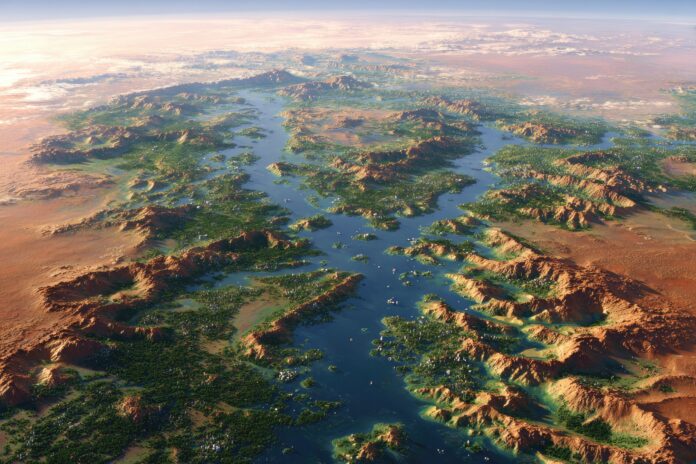Mars, long a fixture in science fiction and interplanetary dreams, is beginning to occupy a serious place in the scientific discourse about our future. With Earth’s ecosystems under increasing stress and climate instability on the rise, Mars has transformed from a speculative frontier to a potential backup plan for civilization. As international space agencies and ambitious private space firms accelerate plans for manned missions to the Red Planet, a bolder, once-unthinkable proposal is regaining traction: terraforming Mars—altering its harsh, alien environment to make it suitable for long-term human settlement.
Leading scientists argue that now is the time to invest not only in launch vehicles and habitats, but also in the research, infrastructure, and ethical frameworks necessary to explore this planetary-scale undertaking. The idea may seem grandiose, but some experts say the foundations could be laid within this century.
Why Terraforming Matters in the 21st Century
Earth is our cradle, but it’s also vulnerable. Rising global temperatures, extreme weather events, freshwater scarcity, deforestation, and overpopulation are all warnings that our current trajectory is unsustainable. If humanity wants to ensure its survival in the long term, it needs to think beyond Earth. This makes terraforming Mars a potential strategy—not just to spread out our risk, but to continue the human story beyond a single planet.
Terraforming, by definition, is the transformation of a hostile planetary environment into one more like Earth’s. On Mars, this could mean thickening the atmosphere, warming surface temperatures, creating liquid water sources, and seeding the land with hardy organisms. While a completely Earth-like Mars may be centuries away, small, manageable steps could begin in the near future. These efforts could also generate valuable scientific breakthroughs in areas such as climate engineering, regenerative life-support systems, sustainable farming, and long-duration space missions.
In fact, technologies developed for Mars could directly benefit Earth. Methods to capture and store carbon, grow food in poor soils, or manage large-scale ecological systems might prove useful in combating climate change at home.
Scientific Proposals and Practical Hurdles
Mars offers several natural advantages for terraforming. Its day is almost the same length as Earth’s. It contains vast quantities of carbon dioxide, frozen water at the poles and beneath the surface, and land area comparable to Earth’s dry land. However, transforming it into a habitable world remains a monumental challenge.
Among the leading proposals are:
- Releasing Greenhouse Gases: This would involve liberating CO₂ from polar ice caps or industrial production of fluorinated gases to warm the planet.
- Orbital Mirrors: Giant mirrors placed in orbit could direct sunlight toward the Martian surface to raise temperatures.
- Importing Ammonia-Rich Asteroids: Redirecting asteroids with high ammonia content could both warm the planet and add nitrogen to the atmosphere.
- Bioengineering Microbial Life: Deploying engineered extremophiles to start oxygen generation, soil improvement, or detoxification.
- Artificial Magnetosphere: Some suggest placing a powerful magnetic shield between Mars and the sun to protect the planet from solar wind and prevent atmospheric loss.
Each concept presents enormous engineering, logistical, and financial challenges. Mars lacks a significant magnetic field and has only about 1% of Earth’s atmospheric pressure, so any heat or atmosphere added could escape into space. Even with unlimited funding and technology, changes could take centuries or longer to manifest at scale.
Still, many scientists advocate for initiating small-scale terraforming experiments on Earth or within controlled Martian environments to gather data and refine these strategies.
Ethical, Legal, and Environmental Concerns
While the technical barriers are immense, some argue that the moral and legal challenges are equally important. Mars is currently a pristine, untouched world. Introducing Earth-originating life—or worse, causing irreversible harm—raises the question: Do humans have the right to alter another planet?
Moreover, there’s a small but real chance that microbial Martian life already exists, likely beneath the surface. If we terraform without first conducting extensive biological surveys, we could wipe out alien life before confirming its existence. This would represent not only a scientific loss but a profound ethical failure.
There are also geopolitical questions. Who governs Mars? Will its terraforming be managed by a single nation, a consortium, or an international space council? Without global cooperation, the Red Planet could become a new domain of political rivalry and corporate exploitation.
Some experts propose that Mars should be protected under a planetary protection framework similar to UNESCO World Heritage sites, until its status—inhabited or not—is conclusively determined.
Laying the Groundwork for the Future
For terraforming Mars to evolve from theory to reality, the scientific community must adopt a multidisciplinary approach. Collaboration between planetary scientists, climate researchers, astrobiologists, ethicists, engineers, and policymakers is essential. Institutions such as NASA, ESA, China’s CNSA, and private players like SpaceX and Blue Origin will need to align on both vision and responsibility.
Critical steps in the next few decades could include:
- Conducting robotic missions to assess the availability of usable water, minerals, and carbon sources.
- Building long-term Martian habitats to serve as testbeds for closed-loop life-support systems.
- Developing international legal agreements governing the use of Martian resources.
- Launching global public forums and education initiatives to engage citizens in the debate over Mars’ future.
While a lush, blue-and-green Mars may remain a distant dream, the journey toward that vision can start now. The knowledge, tools, and awareness gained along the way will undoubtedly benefit humanity—both on Mars and back on Earth.
Sources:
NASA – Mars Exploration
Space – Terraforming Mars
European Space Agency – Mars Science
Science Alert – Terraforming Mars



